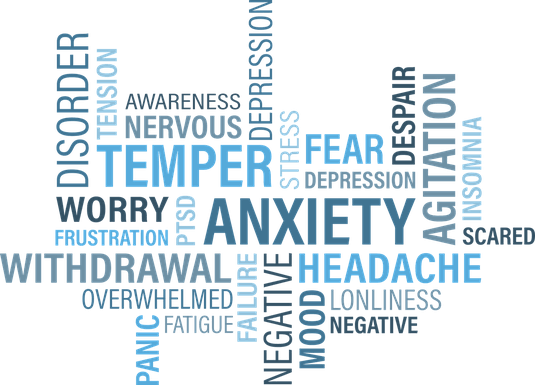CBT for general anxiety disorder (GAD)
WHAT IS GENERAL ANXIETY DISORDER (GAD)?

To worry is to be human – occasional anxiety is a normal part of life and everyone knows what it is like to worry about things like health, money, or family problems. However, people with general anxiety disorder (GAD) suffer from chronic anxiety.
People with GAD tend to worry about the same things as people without GAD – things like health, money, work, family, and relationships. With GAD, however, the worry experienced is persistent and excessive. People often jump to the worst possible conclusions. Constantly battling a sense of unease and impending disaster, GAD is characterised by a crushing sense that something bad is about to happen.
Unlike obsessive-compulsive disorder (OCD), people with GAD typically don't engage in compulsive, ritualistic behaviours to cope with their anxiety. Instead of fixating on specific dangers, the GAD sufferer tends to experience fear of a more general nature.
GAD is one of the most common anxiety disorders. It’s estimated around 4% of people – 1 in every 25 – have enough symptoms to receive a diagnosis of GAD. Like all anxiety disorders, research indicates GAD is more common in women than men.
SYMPTOMS OF GENERAL ANXIETY DISORDER (GAD)

As mentioned, general anxiety disorder (GAD) is characterised by intense, excessive anxiety, with people finding it difficult to control their worries. GAD sufferers can experience both mental and physical symptoms that impair their day-to-day life. The unpleasant nature of these physical symptoms leads many people to mistakenly believe they have a physical illness.
Symptoms can include:
-
Fatigue (both mental and physical)
-
Impaired memory
-
Poor concentration
-
Sleep difficulties
-
Muscle tension
-
Being easily startled
-
Irritability
-
Feeling restless and unrelaxed/on edge
-
Avoidance of everyday situations due to worrying about your ability to cope
-
Hypervigilance.
The severity of GAD varies. Some people will relate to a few of the above symptoms, others will be afflicted by many or all of them.
WHEN DOES GAD USUALLY BEGIN?
GAD develops slowly over time. It often starts during the teenage years/early adulthood. It’s also common for GAD to appear during middle age, when it is often linked to a significant life change. The age of onset is quite variable – excessive worry can arise at any point in a person’s life – but it is often linked to periods of heightened uncertainty.
CAUSES OF GAD
Several factors may influence the development of GAD. Some people are genetically predisposed to being anxious. Whether these genes are triggered often depends on environmental factors. Being reared in a calm, secure household reduces the chances of developing GAD. You are more at risk if you have been reared in an anxious household or if you experience difficult social circumstances or non-validating, perfectionist environments. Life stresses and strains can trigger the condition.
TREATING GENERAL ANXIETY DISORDER (GAD) WITH CBT

Untreated, general anxiety disorder (GAD) often worsens with age. Weighed down by the stresses of life over a long period, it takes less and less stress to trigger acute bouts of anxiety. Tragically, many people with GAD self-medicate with alcohol or drugs. This puts them at increased risk for mood and substance use disorders and suicidal behaviour (1).
The good news is general anxiety disorder can be successfully treated using cognitive-behavioural therapy (CBT). CBT is the most-commonly recommended psychological treatment for GAD.
Like other forms of anxiety, GAD is maintained by a number of factors. These include cognitive/thinking biases, positive beliefs about worry (e.g. "worry keeps me safe"), negative beliefs about worry (e.g. "my worrying is uncontrollable and will drive me crazy"), intolerance of uncertainty ("I need to know for sure") and overly cautious behaviours. CBT is psycho-educational; it helps you explore the counterproductive nature of your worrying thoughts, showing how these thoughts influence how you feel and act. Acceptance and mindfulness techniques can also be successfully blended with CBT in the treatment of GAD.
Regarding duration of therapy, the National Institute for Health and Clinical Excellence (NICE) guidelines note that treatment usually consists of 12 to 15 weekly one-hour CBT sessions – fewer if the person recovers sooner, more if required.
References
1 – Bolton, J. et al, 2006. Use of alcohol and drugs to self-medicate anxiety disorders in a nationally representative sample. The Journal of Nervous and Mental Disease.